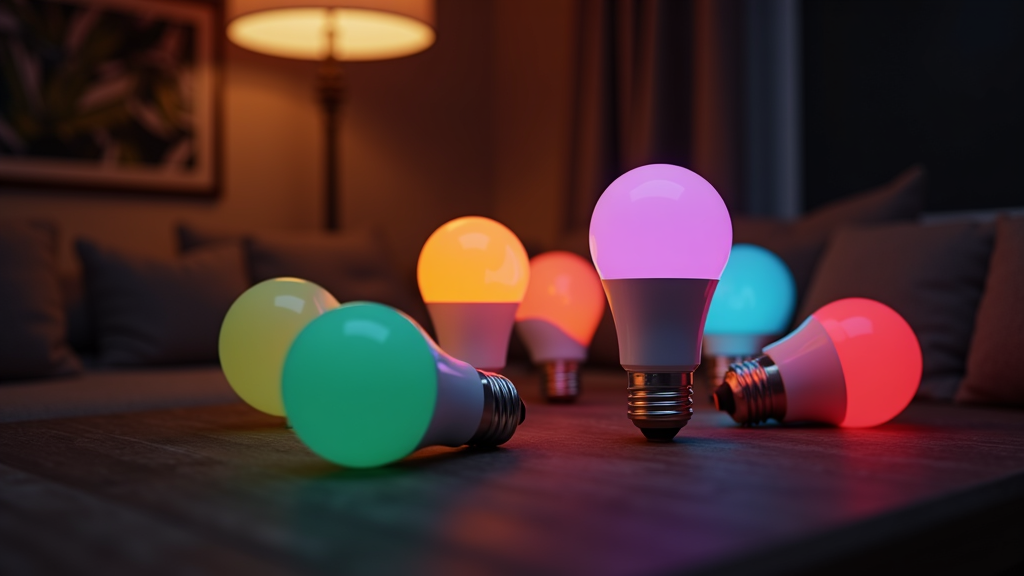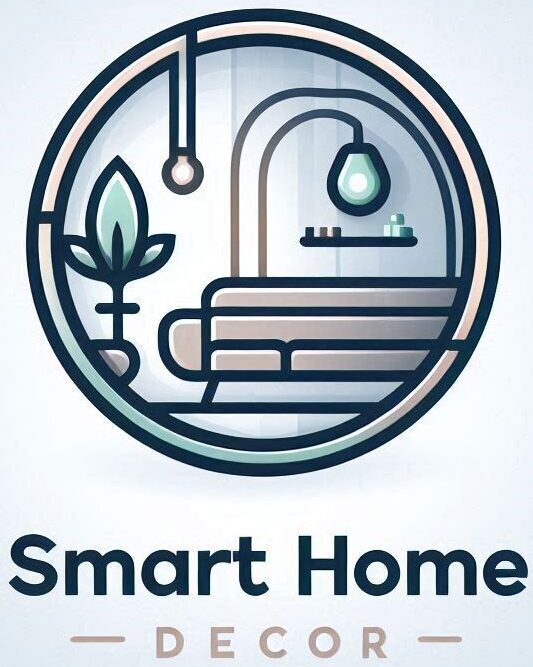Smart bulbs are one of those simple home upgrades that make everyday routines feel smoother. Swapping out regular bulbs for internet-connected ones is actually pretty straightforward, and the perks really add up: voice control, automation, color presets, energy savings, and more, all in one package. If you’re exploring the world of smart homes, tracking down the right smart bulbs can feel like a tall order at first. Here’s a guide to my best picks, with practical tips about picking, setting up, and getting the most out of these techy lights.

The Rise of Smart Lighting in Everyday Homes
Connected lighting has really picked up steam in the past few years. More and more people are drawn to smart bulbs for the convenience, energy savings, and that next level cool factor of tweaking your lights with just your phone or a quick voice command. The growing smart lighting market is proof that lots of us want homes that are more responsive—and maybe a bit more fun—every day.
Smart bulbs work using WiFi, Bluetooth, or by connecting through dedicated hubs. Some work as soon as you screw them in and download an app, while others need a smart home assistant or a bridge. You’ll often see names like Philips Hue, LIFX, Wyze, and TPLINK at stores or online.
A bonus: these bulbs let you really set the mood in any space. Think warm white for cozy reading nooks, bright daylight for kitchen hustle, and a splash of color for movie night. It’s easy to make any room feel a bit more personal.
What Makes a Smart Bulb Great?
Scouting for the best smart bulb for your home means balancing a few key factors: brightness, color range, compatibility with your current tech, reliability, and of course, price. Some bulbs are big on color and effects, while others focus on delivering reliable, bright white light you can use every day. It helps to check if the bulb plays nice with your Google Assistant, Amazon Alexa, Apple HomeKit, or at the very least, a snappy smartphone app.
- Brightness: Measured in lumens. For living rooms, you’ll want 800 to 1100 lumens; kitchens and workspaces might need even more output.
- Color Temperature: This affects whether your light is warm (yellow) or cool (blue). Many bulbs let you fine tune from soft, cozy white to daylight settings for staying alert.
- Color Options: Some bulbs swing from warm to cool whites, while others display millions of colors. Perfect for parties, holidays, or a stylish accent wall.
- Smart Features: Automation, schedules, away-modes, and linking with other rooms blend tech convenience with everyday living.
- App Quality: A user-friendly app makes setup and adjustments quick. Smooth controls mean your lights just work when you want them to.
Top 10 Smart Bulbs To Illuminate Your Home
Let’s jump into ten bulbs that really shine—offering reliability, versatility, and sometimes a real boost to your home’s vibe.
- Philips Hue White and Color Ambiance
Arguably the most popular pick out there. It’s bright, loaded with color choices, and it syncs up with nearly everything. A top choice for whole home lighting and seamless automation. - LIFX Color A19
Packs a serious punch with brightness, doesn’t require a hub, and brings millions of color options. The LIFX app makes it easy to create effects like gentle wakeups or party scenes. - Wyze Bulb Color
Budget-friendly but full featured. Colors, dimming, scheduling—ideal if you want smart lighting without a big price tag. - TPLINK Kasa Smart WiFi LED
Easy to set up, great reliability, and a straightforward app. Comes in basic white or color. Works with Google Assistant and Alexa, hub-free. - Govee WiFi RGBWW Smart Bulb
Great brightness for the price, cool color options, and simple scheduling features. The Govee app is surprisingly intuitive for beginners. - Sengled Smart LED Multicolor
Dependable, quick to install, and you can use it with hubs or directly. If you’re looking for handsfree automation without complication, it’s a solid pick. - Nanoleaf Essentials Smart Bulb
If you’re deep in Apple’s ecosystem or into the Matter standard, this one is a winner. Delivers vivid whites and is a favorite for home offices or creative spaces. - GE Cync Smart LED Bulb
Sleek and simple, this bulb stands out for an easy setup. Works with or without a hub, so it’s good for renters or anyone needing flexibility. - Feit Electric Smart WiFi Bulb
Easy on the wallet, highly rated, and sold almost everywhere. Offers all the core features in a reliable package. - Yeelight Smart LED Bulb
Perfect if you love customizing. Syncs with most platforms, and the control over light effects is impressive for the price.
If you want more control over your home’s vibe—or just to have fun with lighting—these bulbs are a solid starting point. Each brand has its strengths, so think about your must-haves before picking one.
Choosing the Best Bulbs: What To Look Out For
Spotting the best bright bulb usually means looking for high lumens and good color accuracy. For example, for a workspace or kitchen where you need strong light, pick bulbs rated at 1000 lumens or more. The LIFX Color A19 can go up to 1100 lumens, enough for even big rooms. Philips Hue’s range covers various options, so take a peek at the specifics on box labels.
When figuring out the best bulb for home use, LEDs really take the crown. They’re long lasting, energy efficient, and safe to touch. Smart LEDs let you tweak everything from color warmth to time-based light changes—and they don’t lag behind on brightness. Look for bulbs that adjust from a cozy 2700K up to a bright, productive 6500K. This lets you match lighting to whatever activity you have going on, day or night.
Easy Steps to Get Started With Smart Bulbs
Getting going with smart bulbs doesn’t have to be tricky. Follow these steps, and you’ll have your lights set in under 15 minutes:
- Screw in the Bulb: Most smart bulbs use standard sockets; remove the old bulb and pop in the smart one.
- Download the Manufacturer’s App: Use the branded app for setup; it will help you link your new bulb with WiFi or Bluetooth.
- Connect to Voice Assistants: For handsfree use, link your bulb in Alexa, Google Home, or Apple Home apps if you use them.
- Group and Name Your Bulbs: Assign clear names (like “Bedroom” or “Reading Lamp”) to make managing groups and commands easy.
- Set Schedules or Routines: Use your app to automate lighting, like having a lamp turn on as you walk in after work.
- Experiment With Scenes: Tweak colors and brightness to your favorite setups; most apps let you save these as “scenes.”
This simple starter routine gets most people up and running. Later on, branch out with automations as you get more comfortable.
Things To Keep In Mind Before Buying Smart Bulbs
Keep an eye out for a few issues that could trip you up while shopping for smart bulbs so you don’t face hassle later:
- WiFi vs. Hub: WiFi bulbs are easy to set up but can crowd your network. Hub-based systems like Philips Hue keep things running stable if you plan to outfit a bunch of rooms.
- Socket Type: Doublecheck whether your fixtures use E26, GU10, or another base before buying.
- Dimmers: Most smart bulbs don’t work well with traditional wall dimmers. Stick to app dimming, or check brand compatibility.
- App Reliability: Glance at app reviews before committing. A clunky app can make even a top bulb tough to enjoy.
- Firmware Updates: Make sure your bulbs can reliably update for new features and security fixes.
I’ve learned firsthand that juggling too many brands at once leads to app clutter and confusion. It’s usually easier to stick to a main brand for one room or zone.
WiFi and Hub Considerations
Deciding between smart bulbs that work wirelessly or with a hub can shape your setup. WiFi bulbs are great for adding smarts to a couple lamps or for small apartments. If you want whole-home control or bring smart lighting to a bigger space, a hub system like Philips Hue offers a smoother ride. Not sure? Try a couple of WiFi bulbs at first—they’re a low commitment way to get started, and you can always expand later.
Pro Tips for Making the Most of Smart Lighting
After experimenting with dozens of bulbs and playing around with different setups, a few lessons have stuck with me:
Create Personalized Scenes: Set moods for movie nights, late dinners, or wakeup routines—your voice assistant makes it effortless to switch between these setups.
Use Routines With Other Devices: If you own smart sensors, plugs, or thermostats, link them up so the lights react to movement or time of day automatically.
Stay on Top of Updates: Update bulbs and apps regularly for better features and security peace of mind.
Play With Color for Mental Boosts: Warm tones calm you down, while cooler shades are a pick-me-up for focus or productivity.
Don’t be afraid to experiment! Adjusting lights throughout the day—whether gently waking up, giving a little boost to a dinner party, or unwinding in the evening—can add a surprising level of comfort to your home.
Frequently Asked Smart Bulb Questions
Here are some of the most common smart lighting questions (and clear, practical answers based on what I’ve seen in real homes):
What is the best smart light for a home?
Philips Hue White and Color Ambiance is my top recommendation thanks to its versatility and rock-solid reliability. It works with almost all platforms, has wide brightness and color options, and integrates smoothly. If you’re not a fan of hubs, LIFX or Wyze are both smart pick alternatives.
What is the most illuminating light bulb?
Seek out bulbs rated with higher lumens. For example, the LIFX Color A19 pumps out 1100 lumens—handy for big or dimly lit rooms where you really need brightness.
What type of bulb gives the best light for home?
LED smart bulbs are simply the best for living spaces. They’re efficient, run cool, last ages, and you can adjust the color warmth to match your mood or time of day.
Wrapping Up
Smart bulbs bring modern, adaptive, and cozy lighting into your home. Whether you want better light for work, next-level cool colors for gettogethers, or just some energy savings, plenty of solid picks are out there for every home and pocketbook. Spending even 15 minutes to choose the right bulb for your space—and getting familiar with its app—can instantly set you up with a more comfortable and enjoyable home atmosphere.
